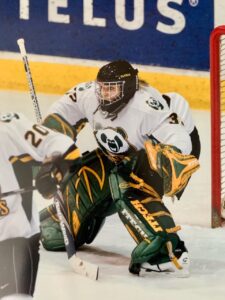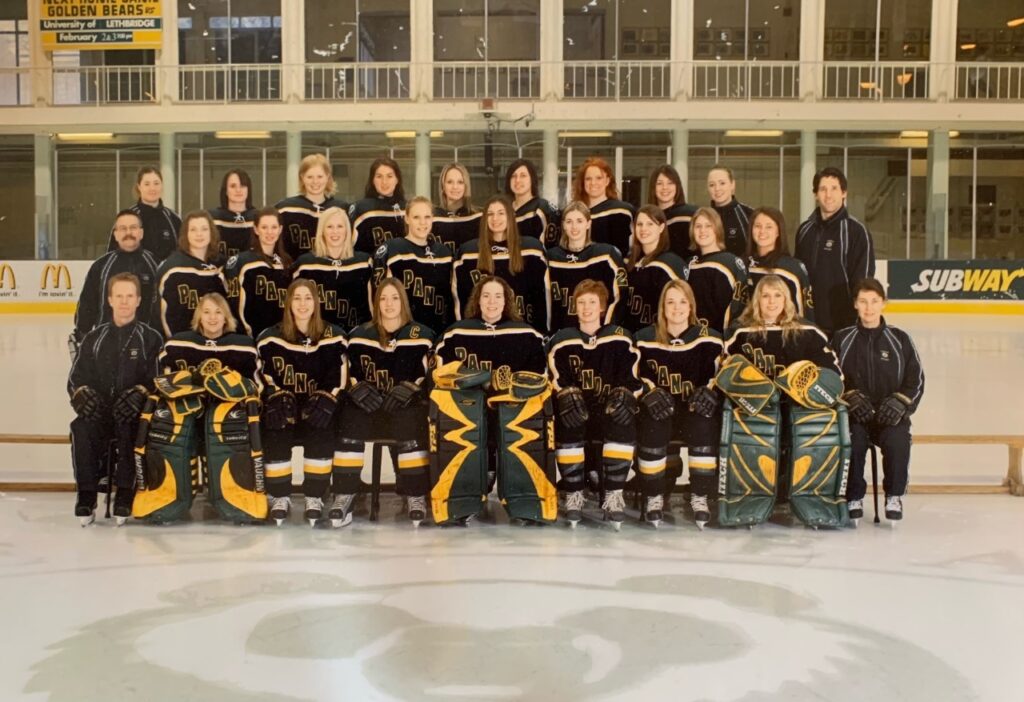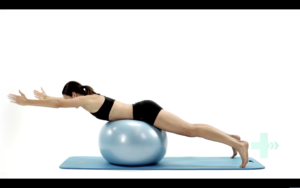
As a kid, I loved going to the hockey rink to watch my brothers play hockey. But I wasn’t content to sit rink side simply to watch. I wanted to play as well! However, back then, there were limited opportunities for girls to play. So, my parents decided to put me in Ringette, which I loved very much. As every player took their turn to play goalie, we discovered quickly that I was quite good at it and I really enjoyed playing in this position.
I still remember training at the Goalie Centre: a place where I trained on a plastic “ice” sheet and coaches would shoot pucks at me with a puck machine. I loved every session and grew to love playing as a goaltender.
In high school, I quit playing ringette and switched to playing female hockey. I also joined my high school’s new hockey program and had the opportunity to play with high level male hockey players which was a great challenge.
After high school, I played with the Grant MacEwan’s women’s hockey team for 2 years and when I transferred to the University of Alberta, I made the Pandas hockey team. This was an amazing program and opportunity and it was here that we won 2 national championships!

I was fortunate to be fairly injury-free throughout my competitive hockey career. But as I got older and was not quite as strong and fit, I started noticing back and hip pain that were related to the repetitive nature of my position.
As I reflect back on my career, what was lacking in my athletic development was a lack of training in injury prevention and performance. Athletic trainers were present for taping and the management of basic injuries. However, there was little to no strength training or injury prevention exercises for the sport or for being a goaltender. The dryland sessions and weight training seemed to focus on the same muscle groups that we used during our practices and games 6 days per week which contributed to furthering our imbalances.
Ice hockey players but especially goaltenders are susceptible to hip and groin injuries due to the very specific and repetitive motions of this position. The “butterfly” style of goaltending especially predisposes the hip to impingement-type of injuries. In one practise session alone, the hips can repeat this motion upwards of 300 times!

of a goalie
Every athlete in any sport are susceptible to repetitive stress injuries. To counter this, it is vital that athletes also strengthen muscles that are under-utilized and to move in planes and directions that is the opposite of their sport. Otherwise, muscle and postural imbalances often result. In other words, exercise specificity is vital for both injury prevention as well as sport performance. The exercises have to be specific to both you as an individual as well as for the demands of your sport.
This is where working with a physiotherapist can be very helpful to address any imbalances you may have developed either from work postures or from your sport. I certainly wished I had one when I was playing!
Submitted by Danielle Bles
Reference:
Mehra, N., Nwachukwu, B.U., & Kelly, B.T. (2019). Hip Injuries in Ice Hockey Goaltenders. Operative Techniques in Sports Medicine. 27:132-137.
